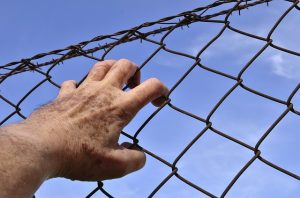
Recent news reports have highlighted that prisons in England and Wales are in a state of crisis. The increase in the numbers of prisoners is one of the most startling features of the social policy landscape of the past twenty-five years. It is all the more remarkable that this increase and its impact have not been, until relatively recently, the centre of any concentrated political debate.
The bold numbers are shocking in themselves:
- An increase from 64,000 people in prison in 2000
- To over 86,000 in 2012.
On average it costs around £38,000 per year to imprison someone and one has to ask whether these huge sums of money represent the best use of public funds. Recidivism rates are poor with 73% of those aged under 18 years sentenced to custody reoffending within 6 months of release.
In addition, serious questions are now being asked about how safe prisons actually are, with 88 suicides in prisons in England and Wales in 2015. Put this bleak figure alongside reports of violence towards staff, bullying and lack of constructive activities and the result is a toxic mix.
The prison crisis is a worldwide phenomenon and 10 million people are in prison across the globe. Ava DuVernay’s brilliant Netflix documentary 13th shows the USA leads the way in this epidemic of incarceration. Over two million Americans are currently in jail and prisoners are overwhelmingly from poor, marginalised, urban communities.
The above is the context in which this new paper needs to be read (Fazel et al, 2012). One of the major concerns of academics, policy makers and campaigners who seek to reduce the numbers in prison, is that many prisoners experience mental illness. In addition, there are concerns that this group of prisoners do not receive appropriate care and treatment. This excellent new research explored the key issues in this area and makes important policy recommendations that will be examined below.
The authors discuss some of the technical and methodological issues related to prevalence studies. These include the fact that self-report approaches and lay interviews can lead to overestimates of prevalence compared to studies carried out by psychiatrists or psychologists.
Despite these caveats, the authors note that there is a consistency amongst findings:
- Prisoners experience higher rates of mental illness
- Surveys estimate that one in seven prisoners are diagnosed with depression or psychosis. These figures appear to have remained unchanged for over a decade
- Research has also consistently demonstrated high rates of comorbidity between mental illness and substance misuse. As the authors highlight, comorbidity has health and social implications; the prognosis for treatment is poor and reoffending rates are high
- In addition, prevalence studies demonstrate that rates of psychiatric disorders and drug dependence are much higher amongst female prisoners. The poor mental and physical health of women in prisons (and the need for alternatives to imprisonment) was outlined in the Corston Inquiry (Corston, 2007)
- Prisoners are a particularly at risk group for suicide and self-harm; for male prisoners the rates are 3-6 times higher and for female prisoners the rate is 6 times higher than the wider community. Behind these statistics are personal and family tragedies.
In looking at these issues, it is important to note that prisoners are clearly not a cross section of the population. The risk factors for suicide and self-harm (such as a history of abuse and trauma) are much more common in this cohort. This makes the identification of those most at risk even more problematic.
- The research here highlights some very interesting comparative data. For example, most countries report a suicide rate among prisoners of 100 to 150 per 100,000 year; yet the rate in France is 179 per 100,000
- Self-harm is a very significant issue within the prison sector but does not appear to have had the same level of research interest as suicidality
- There are differential patterns identified here, including lower rates of suicide and self-harm experienced by black, Asian and mixed race prisoners.
The final area that the research examines is violence and victimisation. People with mental health problems are more likely than other groups in the general population to be subject to violence. Violence is almost taken as a given of daily prison life but there is little research that examines its prevalence. Studies indicate that physical assault is 13-27 times more common in prison than in the community. The prison culture makes it difficult to carry out work in this area as assaults are likely to be under-reported, mostly because of the possible consequences of being seen as an informer. The review indicates that both male and female prisoners experiencing mental health problems were more vulnerable to sexual violence and physical assault.

Prisoners are at increased risk of all-cause mortality, suicide, self-harm, violence and victimisation.
Conclusions
This detailed piece of work demonstrates that the rates of mental disorder are higher amongst prisoners than the wider community. This is particularly the case for serious mental disorders such as psychosis and depression. In addition, about 20% of prisoners have a substance misuse problem.
Features of the prison environment (higher levels of violence, bullying and intimidation alongside the availability of new psychoactive substances such as spice) increase the risks to mental health.
Implications
The paper makes a series of welcome policy suggestions on how prisons can tackle these issues. These include:
- The provision of systematic screening and assessment of prisoners for mental health problems
- Greater provision of drug and alcohol acute detox on arrival at all prisons
- Provision of trauma-focused and gender specific interventions within the prison setting and the development of suicide prevention strategies including monitoring and assessment of prisons and staff training.
In a nutshell, these recommendations are calling for the current best practice in community mental health to be applied to the prison setting.
The Trencin Statement issued by the WHO (2008) states that:
Prisoners shall have access to the health services available in the country without discrimination on the grounds of their legal situation.
This paper shows how far we are from that position, but also the importance of taking that statement seriously and addressing these issues. Individuals, families and communities will benefit if we do.
Alongside these developments, society needs specialist treatment to help it overcome its addiction to imprisonment; that is a political and cultural issue that important work like this can assist.
Links
Primary paper
Fazel S, Hayes AJ, Bartellas K, Clerici M, Trestman R. (2016) Mental health of prisoners: prevalence, adverse outcomes and interventions. The Lancet Psychiatry, Volume 3, Issue 9, September 2016, Pages 871-881, ISSN 2215-0366, http://dx.doi.org/10.1016/S2215-0366(16)30142-0.
Other references
Corston J. (2007) The Corston Report: a report by Baroness Jean Corston of a review of women with particular vulnerabilities in the criminal justice system (PDF). Home Office, Mar 2007.




Mental health of prisoners: have we reached a state of crisis? https://t.co/ASO1QXzHPt
Mental health of prisoners: have we reached a state of crisis? https://t.co/sOBOzTCH95 via @sharethis
Read my blog on excellent research by @seenafazel and colleagues here https://t.co/eHKD570dii @Mental_Elf @Offender_Health @careatsalford
Today @IanCummins9 on @seenafazel review in @TheLancetPsych
Mental health of prisoners: prevalence, treatment, harm
https://t.co/iNc7Snm04v
‘Mental health of prisoners: have we reached a state of crisis?’ Can problems in US prison system be avoided in UK? https://t.co/gDWPQ1orxR
Excellent summary of @seenafazel et al paper on mental health needs of prisoners by @IanCummins9 for @Mental_Elf
https://t.co/O0jQldKdpB
@Mental_Elf Did you watch #TheSecretLifeofPrisons on Channel Four?
Female prisoners experience higher levels of drug dependence, self-harm & suicide https://t.co/iNc7Sn4oFV https://t.co/TPIIdrKwDy
Donna Gipson
Mental health of prisoners: have we reached a state of crisis? https://t.co/1KiGKEANvN via @sharethis
Mental health of prisoners: have we reached a state of crisis? https://t.co/b4vSVhOBU0
Mental health of prisoners
Have we reached a state of crisis?
https://t.co/iNc7Sn4oFV https://t.co/jGS9nHDRdH
… And the summary of the Fazel paper for a quick lunch read/RT https://t.co/AmWwTTsCJ6 https://t.co/9PtQ720BcF
https://t.co/gxOIl5EDxc
RT @Mental_Elf: Prisoners are at increased risk of all-cause mortality, suicide, self-harm, violence & victimisation https://t.co/iNc7Snm04…
Sobering read. I doubt we’re doing any better in Oz.
Mental health & prisons: a state of crisis? https://t.co/b5haxWy85o via @sharethis
A good literature review – Mental health of prisoners: have we reached a state of crisis? https://t.co/rPTdwFfHF4 https://t.co/wyokDRTFZL
A good literature review – Mental health of prisoners: have we reached a state of crisis? https://t.co/T1N9kQhCd9 https://t.co/tGh3txmzcR
Mental health of prisoners: have we reached a state of crisis? Depends who you ask …
https://t.co/oeLh5dsy0U via @sharethis
#uned3 Beth yw gwerth carchardai? Mental health of prisoners: have we reached a state of crisis? https://t.co/HSsvEj5fpN via @sharethis
Mental health of prisoners: have we reached a state of crisis? https://t.co/I99xhUfFFo
Mental health of prisoners: have we reached a state of crisis? https://t.co/WydH0rXsiy
Article: Mental health of prisoners: have we reached a state of crisis? https://t.co/KFtNl1PAT5
Mental health of prisoners: have we reached a state of crisis? https://t.co/b3f6HETL6B via @sharethis
RT @EmpManPaul: Mental health of prisoners: have we reached a state of crisis? https://t.co/vpzYWMAwzO from @Mental_Elf